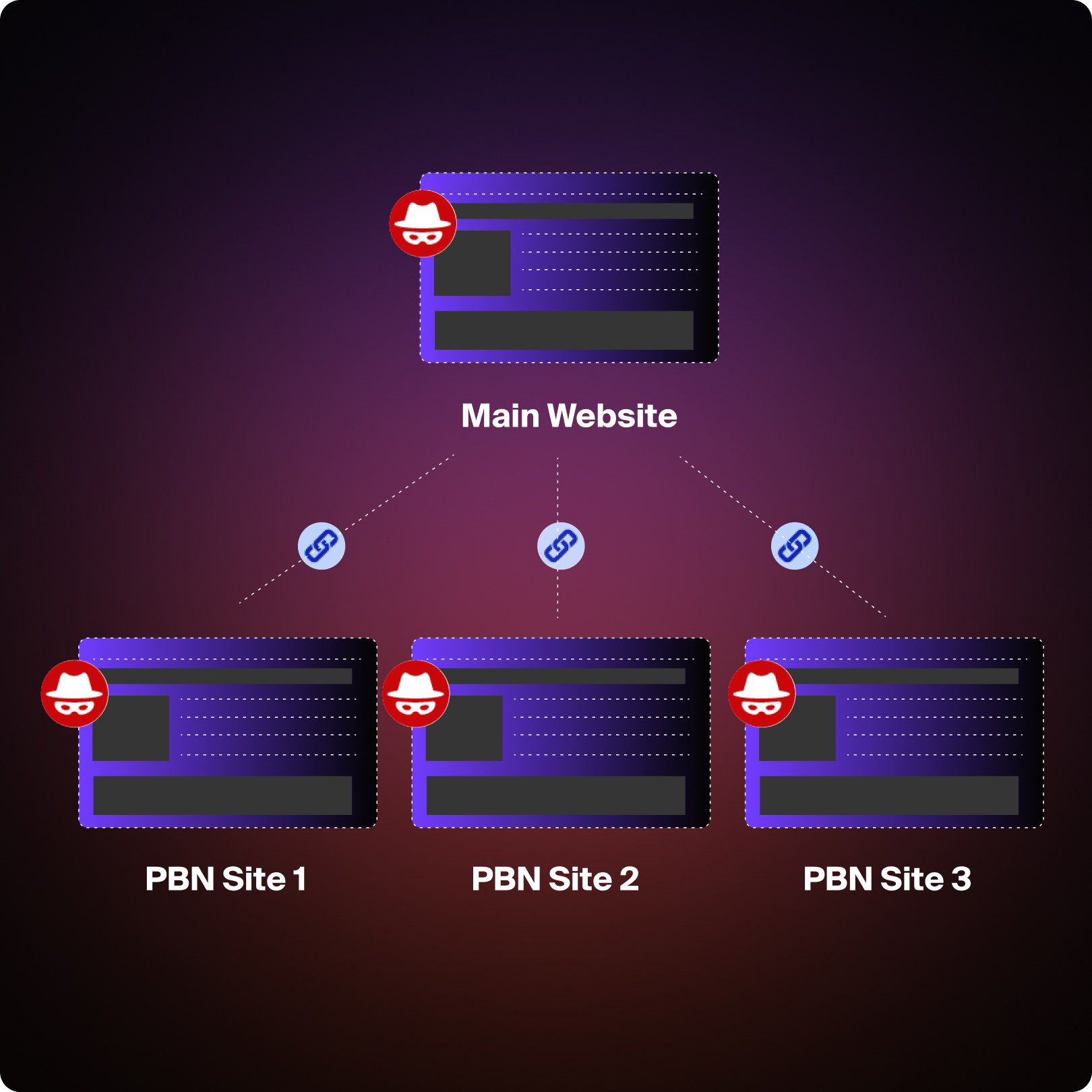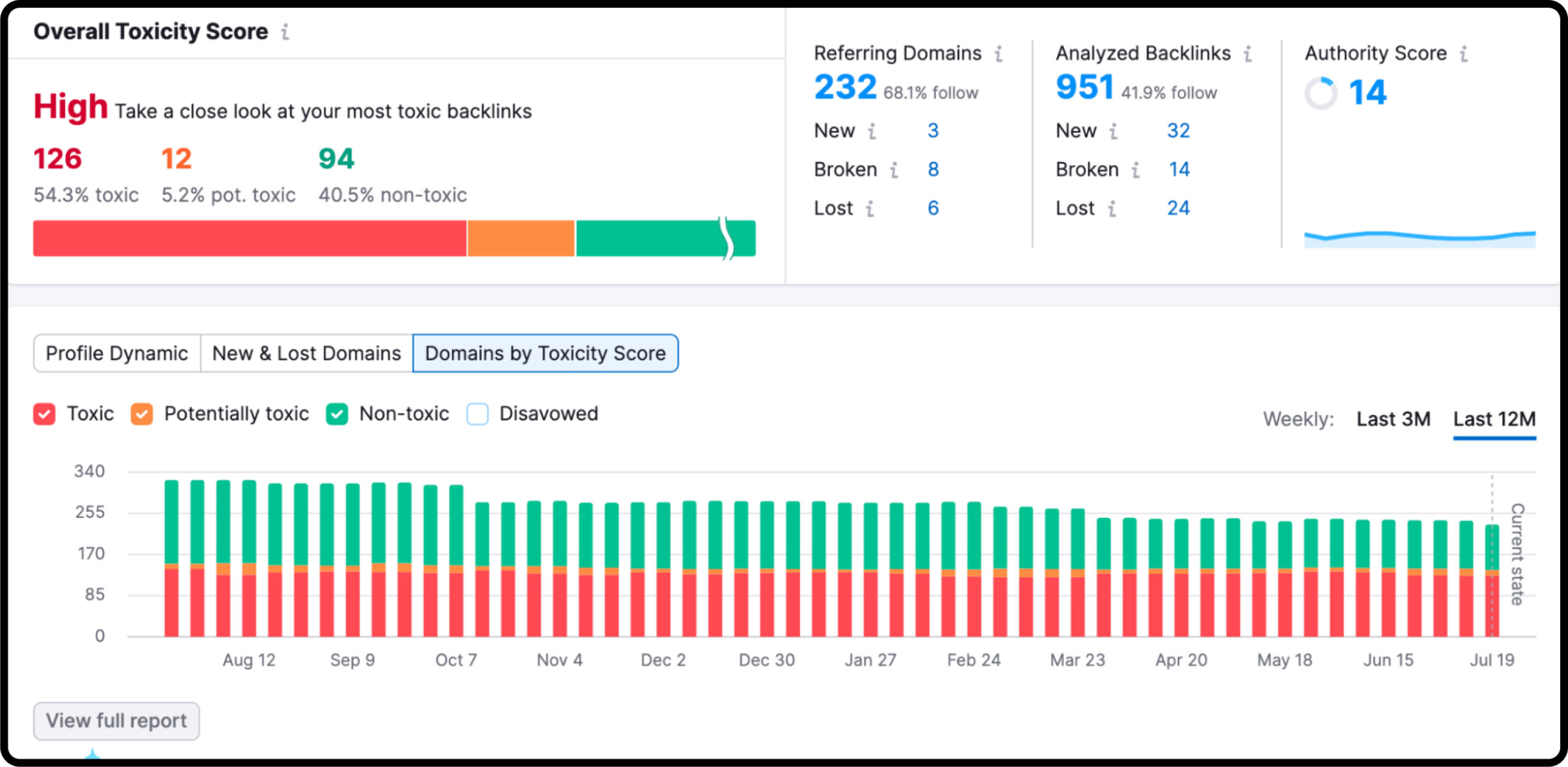Many are tempted by the benefits of private blog networks (PBNs), and some choose to walk down this dark path to rapid rankings and increased authority. Those who chose the dark side must deal with the consequences of the light side, Google.
If you’re struggling to grow your backlink profile and thinking of taking advantage of PBNs, think again. In this post we cover the world of PBN and dive into debunking common myths, exposing dangerous tactics, and providing essential best practices for those who are curious or considering this controversial strategy.
Looking for an SEO breakthrough?
What Is a PBN?
A Private Blog Network (PBN) is a network of websites deliberately created to link out to other sites to improve its organic search visibility, backlink profile and authority. These sites are aiming to funnel a large number of backlinks to specific sites to manipulate it’s authority score to improve ranking and organic eligibility.

The Risks Associated with Private Blog Networks
While it may look like an easy win, there are undeniable risks associated with using PBNs. Being caught using private blog networks to manipulate search rankings can result in a devastating blow to your domain, one you might not be able to come back from.
1. Violation of Google’s Webmaster Quality Guidelines
First and foremost, using PBNs violates Google’s Webmaster Quality Guidelines. This should be enough to get most SEOs to avoid this tactic, but some still chose to push forward. It’s clear that PBNs don’t provide any real value to the sites they choose to link to. Furthermore, these low-quality links aren’t earned; the best way to earn natural links is to create compelling content that other sites are eager to link to.
2. Manual Actions
Once a site is identified as using PBNs to manipulate search, penalties can be given to this site, which will cause a dramatic and rapid loss in rankings and an overall drop in traffic. Once a manual penalty has been issued, this can be a difficult thing to bounce back from. Manual penalties are really hard to shake off and oftentimes result in those users starting from scratch with a new site. The question is, are you willing to risk it all?
If you are hit with a manual penalty, the only course of action is to request reconsideration after resolving the issues on each page or pages. Even with successful reconsideration, your pages aren’t guaranteed to fully recover and may never climb back up to their original rank.
3. Ignored Links
Depending on what Google already has in their database about the form of links to your site, it may choose to simply ignore these links from sites altogether. Google has a vast number of disavow links in their database submitted by marketers and webmasters across the globe. If they find any matching links from those files pointing to your site, it might just simply ignore them. This means all these inbound links will have zero impact on your ranking ability.
Why Would Someone Use a Private Blog Network?
SEO is not about shortcuts; it’s about honesty, accuracy, and helpfulness. Building that reputation can take years, yes – years. When you’re just starting out or trying to gain an edge in saturated and competitive markets, using a private blog network can be seen as a fast pass to authority.
1. Building a Backlink Profile Is Difficult and Unpredictable
Earning authoritative links is one of the more difficult and unpredictable things to pursue in SEO but those who get it right are insanely valuable. While most link building efforts are done through email, broken link identification, these link building tactics are even less predictable than content writing.
This is often why PBNs are seen as a predictable and quick way to generate what other sites spend years building and strategically writing content for. Having a definitive answer on when and how much is often too good to be true in the SEO world.
2. Anchor Text Control
Anchor text plays a bigger role than most SEOs think. Anchor text is a critical aspect of SEO because it helps search engines understand the subject matter of linked pages and why users may visit them. This is kind of like meta descriptions, it’s a way of knowing what you can expect from a page before actually navigating there.
Having descriptive anchor text pointing to high-value pages on your site, like service or software pages, can have a big impact on rankings and authority. Having control over anchor text with a PBN is just another layer deeper in manipulation.
3 Common Myths Around PBNs
1. PBNs Aren’t Effective For Ranking Improvements
Believe it or not, PBNs are effective for ranking improvements. Generating these authority signals around your site should show a relatively quick boost to domain authority ranking and organic keyword rankings.
While the results may be effective, these are often short lived and dangerous. Partnering or using PBNs is like running from the cops with a warrant, you might be able to hide for a while, but you’ll be found eventually and have to face the consequences of those actions.
2. PBNs Are Easily Identifiable By Google
Google is constantly learning and finding new ways to discover and index content but SEOs are always on the hunt for the next best thing. With Google cracking down on PBNs, SEOs have had to increase their ninja-like tactics for hiding among the shadows.
As mentioned before, Google doesn’t need to identify the PBN source every time and can use its own database of disavowed links to simply not count the new backlinks pointing to your site. Google may already know these links are low-value and chose not to waste their time to crawl or identify the source.
3. Sites That Link to Each Other Are PBNs
While trading links is technically against Google’s Guidelines, it’s not uncommon for businesses in similar industries or verticals to cross-link to each other. While some of these instances are unnatural, many of them are valid and not considered to be PBNs.
Continuous and obvious linking can be identified and shutdown by Google but if used sparingly and deliberately, most of the time these exchanges will look valid and natural.
PBN Best Practices
Sometimes PBNs can be linking to your site without you ever going and requesting it. Oftentimes Google is going to understand that these connections are bogus and ignore them. For the few instances there are a few things you can do to protect your website and all the authority you’ve worked so hard to generate.
1. Audit Your Backlinks
The first thing you should do is get an understanding of your backlink toxicity score. The image below is a screenshot from SEMRush’s backlink audit tool. This can help you identify your overall backlink profile health and let you create disavow lists easily for your most toxic backlinks.

You can use a tool like this to identify any spikes in malicious activity or domains attempting to target your content. This is a good report to consistently check, sites are linking to your site on a weekly basis even if you don’t know about it. These new additions should be checked for validity and accuracy.
2. Disavow PBN links
Once you’ve audited your backlink profile, you can start to build a list to disavow links to Google. This method is good for keeping your profile clean but be careful about which links you decide to include.

Some malicious websites are easy to identify but some of these in the list could be false positives. If you have a domain that’s continuously linking to your site from new pages, you can be confident that this is a PBN site. One-off links marked as spam can still be spam, but double-check before removing them, especially if they have high domain authority.
3. Do Link Outreach Instead
The best advice and practice is to simply do outreach instead. Backlink outreach can be tedious and unpredictable, but it remains the most honest and effective way of generating backlinks to your site. Some of the best outreach tactics include:
- Digital PR
- Email outreach
- Resource link building
- Broken link building
- Reclaiming links
Providing something of clear value, replacing an old article, or genuine interest is the best way for not only building links but building relationships. As SEO evolves, rankings will go beyond traditional signals like authority and rely on the connective tissue that ties the web together. This connective tissue is made up of more than just links; it involves quality content, positive user experience, and helpfulness.
Getting Links Without The Organic Traffic Sink
Generating quality links is still a valuable activity and should be executed with the user in mind. Before you reach out to a prospective link, understand the true value of your content and if it provides anything unique and use that as leverage. Don’t get discouraged by unanswered emails even after three or more attempts. Link building is difficult but the ROI is immense.
The best way to ensure you have a clean and clear backlink profile with momentum is to partner with an expert with experience in growing organic visibility. Here at NoGood, we have just that. Our team of SEO experts are well-versed in protecting your domain and generating a backlink profile that rivals your competitors. If you want to learn about how we can help you reach organic success, let’s talk about it.







